 |
ENGRAVED ON THE NECK POST. SKIN HEAD. 3 PLY RESINATOR. VERY CRUDE HAND MADE INSTRUMENT IN GOOD CONDITION." |
 |
This banjo appeared on ebay in March of 2001.
The description and some auction pictures are below:
 |
ENGRAVED ON THE NECK POST. SKIN HEAD. 3 PLY RESINATOR. VERY CRUDE HAND MADE INSTRUMENT IN GOOD CONDITION." |
 |
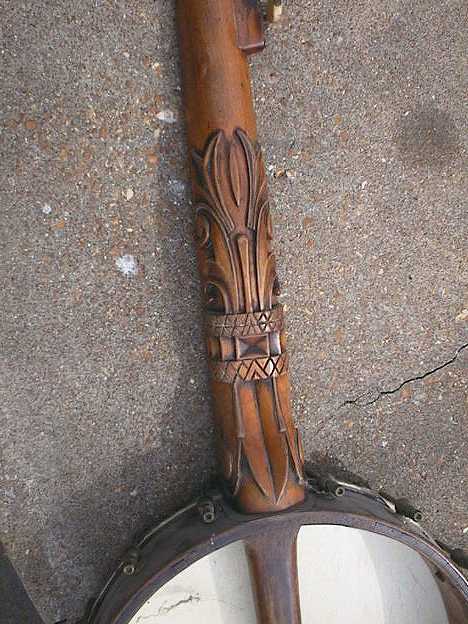 |
The heel carving is an amazing fantasy, beautifully executed
- + -
as is the
|
 |
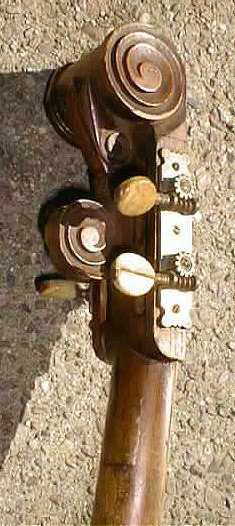 |
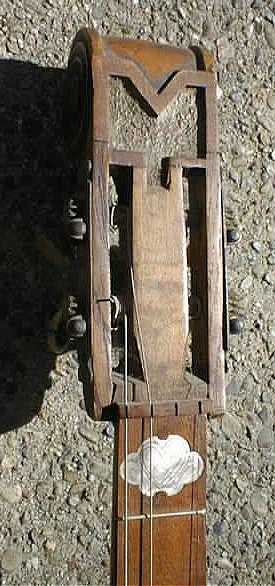 |
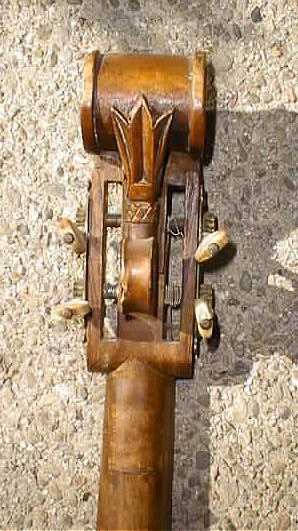 |
The neck is constructed of numerous parts. The main
element is the length
of neck with the carved heel. The peghead is spliced
onto that and consists
of the lower section which blends into the neck and extends
in front to the top
of the peg box, the two side slats that form the outsides
of the slotted peg box,
and the carved upper portion which joins the peghead
at the top of the peg box
and extends in back about halfway down.
|
|
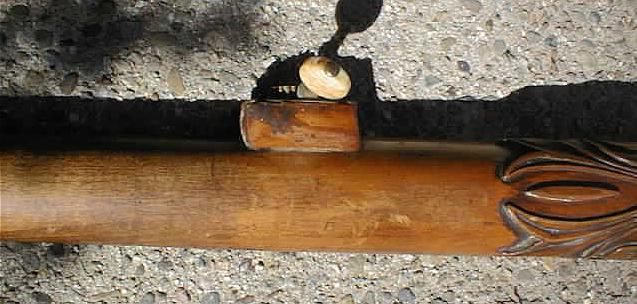 |
The pot is miraculously constructed of myriad rectangular
rods placed side by side,
curved into a hoop and then secured inside and out with
very pretty wood overlays.
 |
- + - The tension hoop is iron. |
 |
The extra holes are evidence of earlier brackets or a change of mind by the maker. |
The internal construction of the wall of the pot is more
evident here:

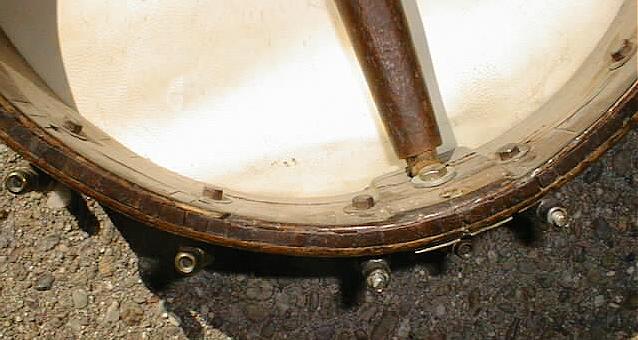
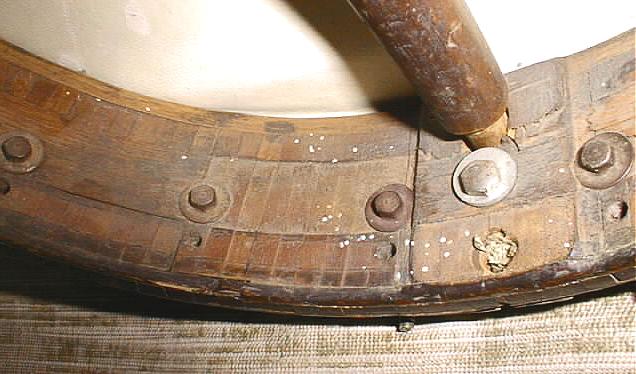
The date, 1876, is inscribed on the top of the dowel stick
in pencil:

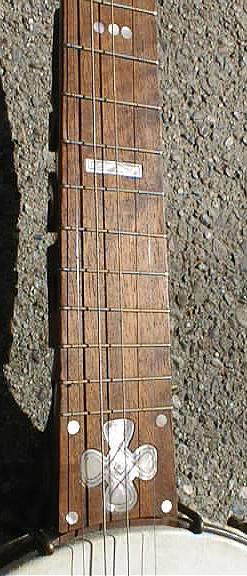 |
covered with an unfinished mahogany overlay and fretted. This was very carefully done, but....... The inlays are roughly inscribed crude mother of pearl. |
 |
The tailpiece attachment is probably not original.
I suspect that the dowel
stick originally protruded through the center where the
tail piece bolt now
sits, and has been shifted upwards to lower the action
for "modern" playing.

All in all, I find it a most curious and delightful artifact.
The person who
took such care and effort to construct it must have enjoyed
it as evidenced
by the worn finish on the back of the neck. What
lies under that thin
mahogany cover? I'd love to see the fingerboard
wear corresponding
to the wear on the back!
This page and its contents ©2001 HSD. All rights reserved.